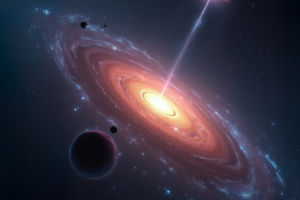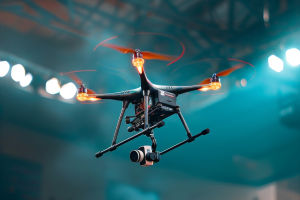Inside a Nuclear Reactor
Have you ever wondered what's really inside a nuclear reactor that lets it produce vast amounts of energy? It's not just a mysterious, glowing core but a carefully engineered system that controls nuclear reactions safely and efficiently.
Let's take a closer look at the heart of nuclear power—the core components of a reactor, how they work together to harness atomic energy, and the safety measures that keep everything in balance.
What Powers a Nuclear Reactor?
At the core of any nuclear power plant lies the nuclear reactor vessel, a steel chamber where the magic of atomic fission occurs. The reactor's fuel—usually uranium or plutonium—is arranged in the form of small ceramic pellets stacked inside long metal tubes called fuel rods. These rods group together to form fuel assemblies, which look somewhat like bundles of pencils.
When the reactor is running, atoms in the fuel undergo fission—meaning their nuclei split apart after being hit by neutrons. This splitting releases a huge amount of heat energy, alongside more neutrons that continue the chain reaction. The key is to manage this reaction precisely to produce stable heat over long periods.
The Core Components: Fuel, Moderator, and Control Rods
Three main players inside the reactor vessel work together to sustain and control the nuclear reaction:
1. Fuel:
The uranium fuel pellets encased in zirconium alloy tubes are the heart of the reactor. The high energy produced as uranium atoms split heats the fuel rods, which then transfer their heat to the surrounding coolant.
2. Moderator:
Nuclear fission releases fast-moving neutrons that must slow down to keep the chain reaction going efficiently. This is the job of the moderator—a material (usually regular water, heavy water, or graphite) that absorbs energy from neutrons, slowing them down to speeds where they are more likely to induce further fission.
3. Control Rods:
Control rods are made of neutron-absorbing materials such as boron, cadmium, or hafnium. Inserted or withdrawn from the reactor core, they adjust the number of free neutrons available—essentially acting as the "brakes" to speed up, slow down, or stop the reaction altogether. When fully inserted, control rods halt the reaction, useful during refueling or emergencies.
Cooling and Heat Transfer: The Reactor's Plumbing
The enormous heat generated inside the core must be carefully removed to prevent overheating:
• Coolant: Usually water acts as both the moderator and coolant in many reactors, flowing through the core to absorb heat from the fuel rods.
• In pressurized water reactors (PWRs), water is kept at high pressure to remain liquid at high temperatures as it absorbs heat.
• In boiling water reactors (BWRs), the coolant boils inside the reactor vessel, generating steam directly to drive turbines.
This heated coolant or steam is directed to turbines outside of the reactor vessel, where it produces electricity.
Safety Measures: Controlling the Chain Reaction and Containing Radiation
Safety is paramount in nuclear reactors, and multiple layers of control and protection exist:
• Multiple Control Systems: Besides control rods, chemical methods, like adding boron to the coolant, can absorb neutrons to finely tune the reaction.
• Containment Structures: The reactor vessel sits inside heavy concrete and steel containment buildings designed to prevent any radioactive materials from leaking into the environment.
• Cooling Safety Systems: Backup cooling systems operate automatically to prevent overheating if the main cooling fails.
• Radiation Shielding: Thick walls, water pools, and shielding materials protect plant workers and the public from harmful radiation.
Experts like those at the U.S. Nuclear Regulatory Commission emphasize that ongoing monitoring, regular maintenance, and strict protocols make modern reactors some of the safest energy sources available. Advanced designs also integrate passive safety features that require no human intervention to shut down safely in extreme situations.
Why Understanding the Reactor Matters
Grasping what's inside a nuclear reactor—and how it works—helps dispel fears and misconceptions about nuclear power. It illuminates the incredible scientific and engineering achievements that enable us to tap into energy locked inside atoms safely.
Whether it's the delicate dance of fuel rods and control rods, the invisible flow of neutrons, or the careful management of heat and pressure, every piece plays a vital role in turning atomic energy into the electricity many of us rely on daily.
Looking Forward: Innovations and the Future of Nuclear Power
New reactor designs, like small modular reactors (SMRs) and Generation IV reactors, promise even greater efficiency, safety, and reduced waste. These advances include novel fuels, improved materials to withstand harsh radiation, and passive safety systems.
Imagine a future where nuclear power plants are not just giant, single locations but modular, adaptable units integrated closer to communities—continuing to provide reliable, carbon-free energy.
What's Your Take on Nuclear Power?
Now that you've peeked inside the laboratory of atomic reactions, how do you feel about the role of nuclear energy in our future? Are the engineering safeguards reassuring? Would you be curious to visit a nuclear plant or learn how power plants operate in your region?
Share your thoughts on how knowledge about nuclear reactors shapes your view on this powerful energy source.
Contact to : xyjph123@gmail.com
Privacy Agreement
Copyright © boyuanhulian 2020 - 2022. All Right Reserved.
Privacy Agreement
Copyright © boyuanhulian 2020 - 2022. All Right Reserved.


